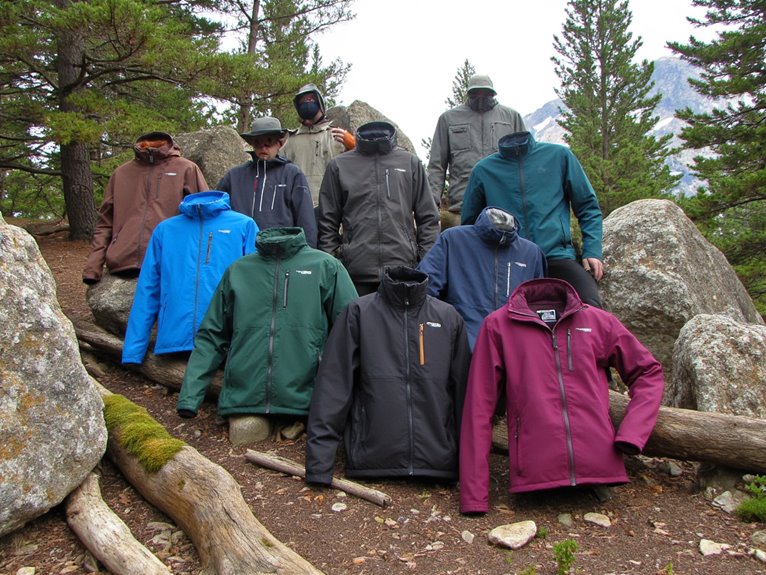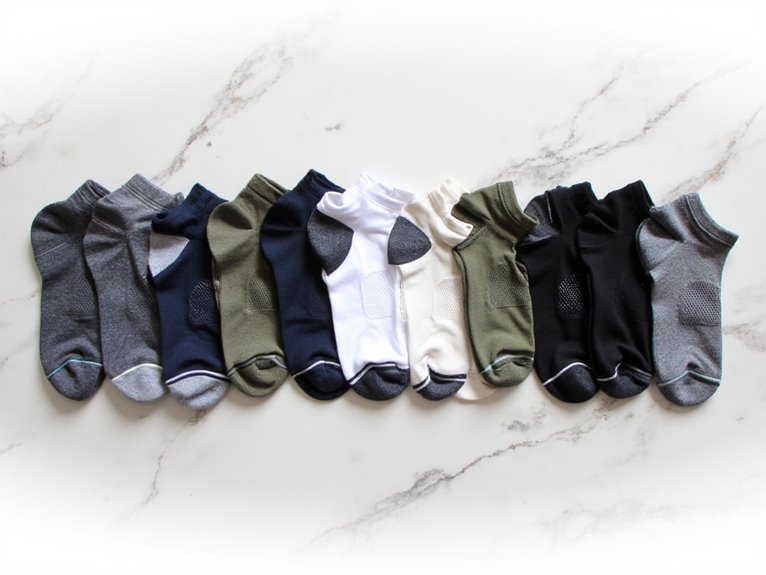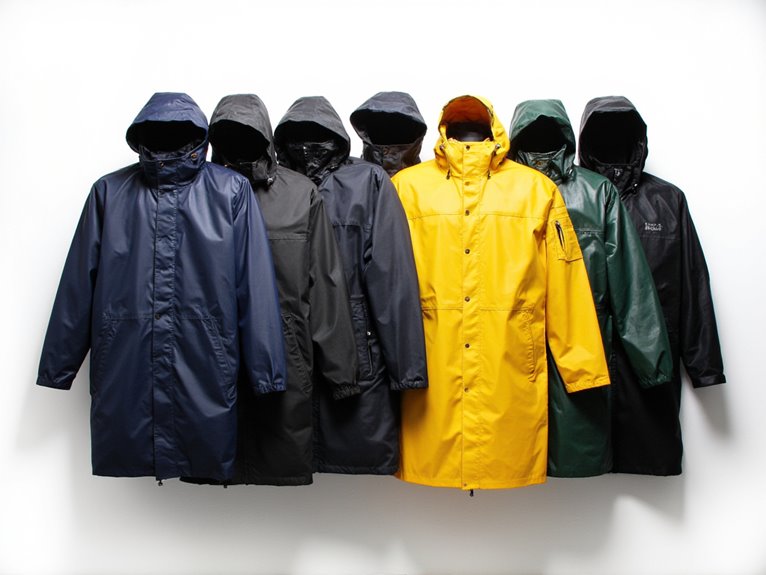Why Are so Many Tarps Blue?
The widespread adoption of blue tarps can be attributed to a combination of practical advantages, historical developments, and psychological associations. Initially, blue tarps were made from canvas and treated with wax or oil for water resistance, later shifting to synthetic materials. The blue color became standard due to its high visibility, UV resistance, and ability to reflect sunlight. Additionally, blue tarps are more affordable than those of other colors. Their calming effect, association with trust and reliability, and brand recognition have solidified blue as the industry norm. Delve into the intricate web of factors behind the ubiquity of blue tarps.
We are supported by our audience. When you purchase through links on our site, we may earn an affiliate commission, at no extra cost for you. Learn more. Last update on 6th January 2026 / Images from Amazon Product Advertising API.
The History of Blue Tarps
The origins of blue tarps can be traced back to the early 20th century, when canvas tarpaulins were first introduced as a durable, water-resistant covering solution for outdoor applications.
Initially, these tarps were made from cotton or canvas and were often treated with wax or oil to improve their water-repelling properties.
As synthetic materials emerged, tarps began to be manufactured from polyester, polyethylene, and other plastics.
The blue color became a standard due to its high visibility and ability to reflect sunlight, reducing heat absorption.
Throughout the mid-20th century, blue tarps became ubiquitous in construction, camping, and outdoor industries, solidifying their place as a trusted and reliable covering solution.
Blue's Practical Advantages
Beyond their aesthetic appeal, blue tarps offer several practical advantages that have contributed to their widespread adoption across various industries.
These advantages have played a significant role in making blue tarps a staple in many sectors.
Some of the key practical advantages of blue tarps include:
Visibility: Blue tarps are highly visible, making them easily identifiable in various environments.
UV Resistance: Blue tarps are designed to withstand harsh outdoor conditions, resisting fading and deterioration caused by UV rays.
Moisture Resistance: Blue tarps are often treated with waterproof coatings, making them ideal for applications where water resistance is essential.
Cost-Effectiveness: Blue tarps are generally more affordable than tarps of other colors, making them a cost-effective solution for many industries.
Durability and Fading Concerns
When evaluating the durability of a tarp, several key factors come into play.
Fade resistance testing, color retention rate, and material degradation rate are essential considerations, as they directly impact the tarp's overall performance and lifespan.
Fade Resistance Testing
Fade resistance testing is a critical component of evaluating a tarp's durability, as it directly impacts the product's lifespan and overall performance.
This testing process involves exposing tarps to accelerated weathering conditions, such as intense UV radiation, high temperatures, and moisture, to simulate real-world environmental stresses.
The results of these tests provide valuable insights into a tarp's ability to resist fading, cracking, and discoloration.
Some key aspects of fade resistance testing include:
UV radiation exposure: Tarps are subjected to intense UV radiation to simulate prolonged outdoor exposure.
Colorfastness evaluation: The color and appearance of the tarp are evaluated before and after testing to assess fading and discoloration.
Material degradation assessment: The tarp's material properties, such as tensile strength and tear resistance, are evaluated to determine the impact of weathering on its overall durability.
Weathering cycle simulation: Tarps are subjected to repeated cycles of weathering, including temperature fluctuations and moisture exposure, to simulate real-world environmental conditions.
Color Retention Rate
The ability of a tarp to retain its original color and vibrancy over time is a critical aspect of its overall durability, as fading can substantially impact its performance and lifespan.
A tarp's color retention rate is influenced by factors such as material composition, UV resistance, and dye quality.
Tarps exposed to direct sunlight, harsh weather conditions, or heavy use are more prone to fading, which can lead to a loss of water resistance and compromised structural integrity.
Manufacturers often employ specialized treatments and coatings to enhance color retention, but individual results may vary.
When selecting a tarp, it's essential to consider the specific application and environmental conditions to ensure the chosen product can withstand the demands placed upon it.
Material Degradation Rate
A tarp's material degradation rate, influenced by factors such as UV exposure, chemical resistance, and fabric weave, substantially impacts its overall durability and susceptibility to fading.
This degradation can lead to tears, cracks, and discoloration, ultimately affecting the tarp's performance and lifespan.
To mitigate material degradation, consider the following factors:
- UV resistance: Look for tarps with built-in UV inhibitors or apply a UV-resistant coating.
- Fabric weave: A tighter weave can improve durability and reduce fraying.
- Chemical resistance: Choose tarps with resistance to chemicals, fuels, or other substances that may come into contact with the tarp.
- Material thickness: A thicker material can improve durability and reduce degradation.
Brand Recognition and Marketing
In terms of brand recognition and marketing in the tarp industry, a strong visual brand identity is essential.
This can be achieved through a consistent color scheme that resonates with the target audience and fosters an emotional connection.
Visual Brand Identity
By consistently presenting a unified visual identity, tarp manufacturers can effectively build brand recognition and establish a strong marketing presence in the industry.
A well-crafted visual brand identity helps to differentiate a brand from its competitors and creates an instant connection with customers. This can be achieved through a cohesive visual language that resonates across all marketing channels.
Some key elements of a strong visual brand identity include:
Logo design: A simple, yet distinctive logo that represents the brand's values and mission.
Typography: A consistent font style and size that reflects the brand's personality and tone.
Imagery: A consistent visual style that evokes the brand's values and resonates with the target audience.
Color palette: A limited palette of colors that are consistently used across all marketing materials.
Consistent Color Scheme
In the pursuit of establishing a cohesive brand image, a consistent color scheme plays a vital role in reinforcing brand recognition and marketing efforts.
A well-chosen color scheme can evoke emotions, convey values, and differentiate a brand from its competitors.
In the context of tarps, a consistent blue color scheme has become synonymous with quality, reliability, and durability.
This consistency creates a sense of familiarity, making it easier for customers to recognize and remember a brand.
By using a consistent color scheme across all marketing materials, packaging, and products, brands can build a strong visual identity that resonates with their target audience.
A cohesive brand image, in turn, can lead to increased brand loyalty, customer trust, and ultimately, increased sales.
Emotional Connection
The emotional connection formed between customers and tarps is rooted in the feelings of trust, reliability, and protection that these products evoke. This connection is nurtured through strategic branding and marketing efforts.
Tarps provide a sense of security and protection from the elements, evoking feelings of safety and trust.
The consistent blue color scheme creates a strong visual identity, making tarps instantly recognizable and memorable.
Tarps are often associated with durability and reliability, fostering a sense of dependence and loyalty.
For some, tarps may evoke memories of camping trips or outdoor adventures, creating a sense of nostalgia and emotional attachment.
Psychological Impact of Blue
The calming effect of blue, a ubiquitous color in tarps, has been extensively studied in the domain of psychology, revealing its profound influence on human emotions and behavior.
Research has shown that blue is often associated with feelings of trust, loyalty, and wisdom. It can also evoke a sense of calmness and serenity, which can be beneficial in high-stress environments.
In the context of tarps, the blue color may contribute to a sense of reassurance and stability, making them more appealing to consumers.
In addition, the psychological impact of blue can also influence purchasing decisions, as people are more likely to trust and prefer products with blue packaging or branding.
Moreover, the psychological impact of blue in tarps is significant, and its effects should not be underestimated.
Industry Standards and Regulation
Manufacturers of tarps must comply with stringent industry standards and regulations, guaranteeing their products meet specific requirements for quality, durability, and safety. This certifies that tarps can withstand various environmental conditions and perform their intended functions effectively.
Some key industry standards and regulations include:
- ASTM International: Sets standards for tarp materials, testing, and performance.
- ISO 9001: Specifies quality management system requirements for tarp manufacturers.
- OSHA regulations: Govern workplace safety and health standards for tarp manufacturing facilities.
- CPAI-84: Establishes standards for flame retardancy and fire resistance in tarps.



